By Dave Richards — For the first time in nearly 30 years, the annual World Road Cycling Championships were held in the United States. For ten days last September (2015), cyclists representing over 75 countries converged on Richmond, Virginia. The last time the Worlds were held here was in 1986 at Colorado Springs. Foolishly, I passed on that one, so there was no way I was going to make that mistake again.
[Editor’s note: With the 2020 World Championships coming up this weekend (September 24-27) in Imola, Italy, we thought you might enjoy this look back at the 2015 World Championships in Richmond, Virginia.]
As I checked in at the press room in downtown Richmond, I knew I was in for something special. When I cover other UCI events such as the Tour of Utah or Amgen Tour of California, thirty or so media folks meet in a relatively small room. Contrast that with the Worlds where there were hundreds of accredited press in a large convention hall. The usual suspects I work with were there; ace photographers Casey Gibson, Brian Hodes, and Darrell Parks. Adding to our ranks were the icons of Euro cycling photography – Watson, Sirotti, Bettini, deWaele – even Sunada from Japan. Talk about serious photo coverage!
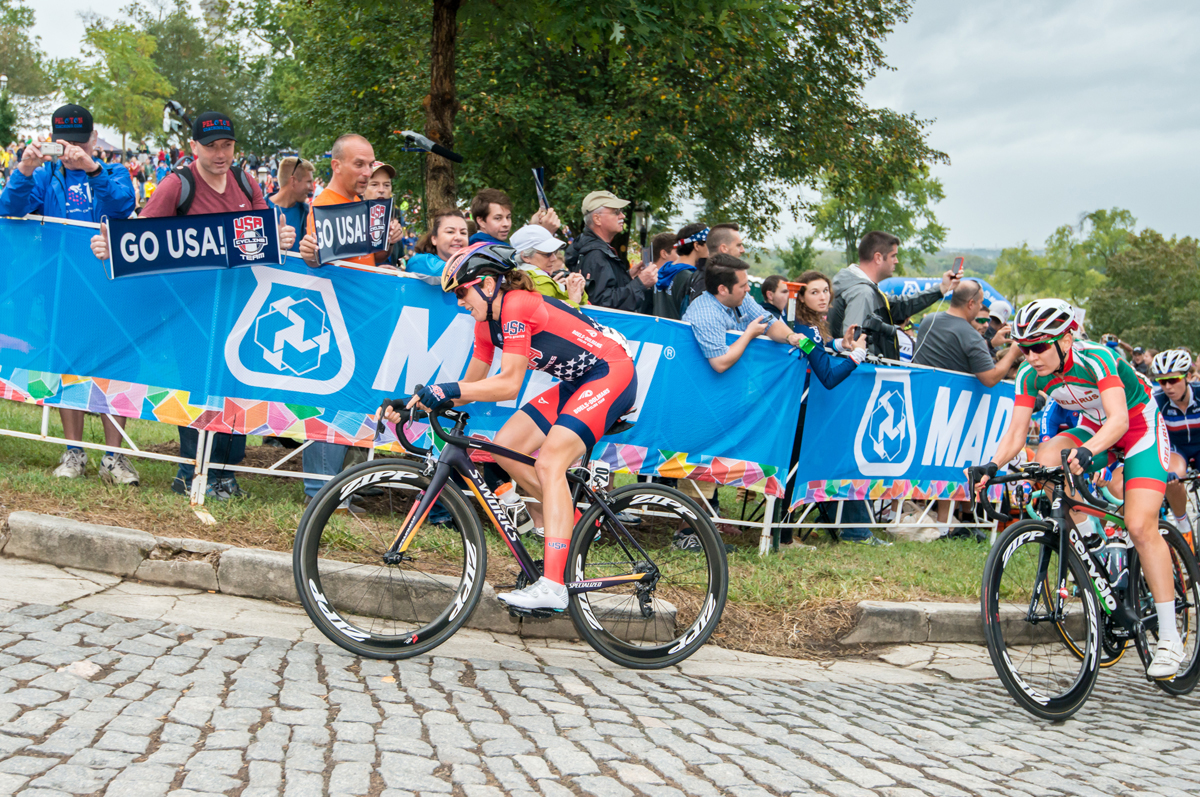
A group of us went out in the media van to preview the road course. It consisted of a 16-kilometer loop through the streets of Richmond. The racers would ride anywhere from 4 laps (64 km) for the junior women up to 16 laps by the elite men for a total of 261 km (162 miles). The course was deceptively hard, though mostly flat. Each lap featured two very steep cobbled climbs – Libby Hill and 23rd Street. The Libby Hill climb zigzagged through a small park filled with screaming fans reminiscent of the famous Belgian classics such as the Tour of Flanders. The 23rd street climb featured leg-shattering grades of 20%. All of this over rough, jagged cobblestones.
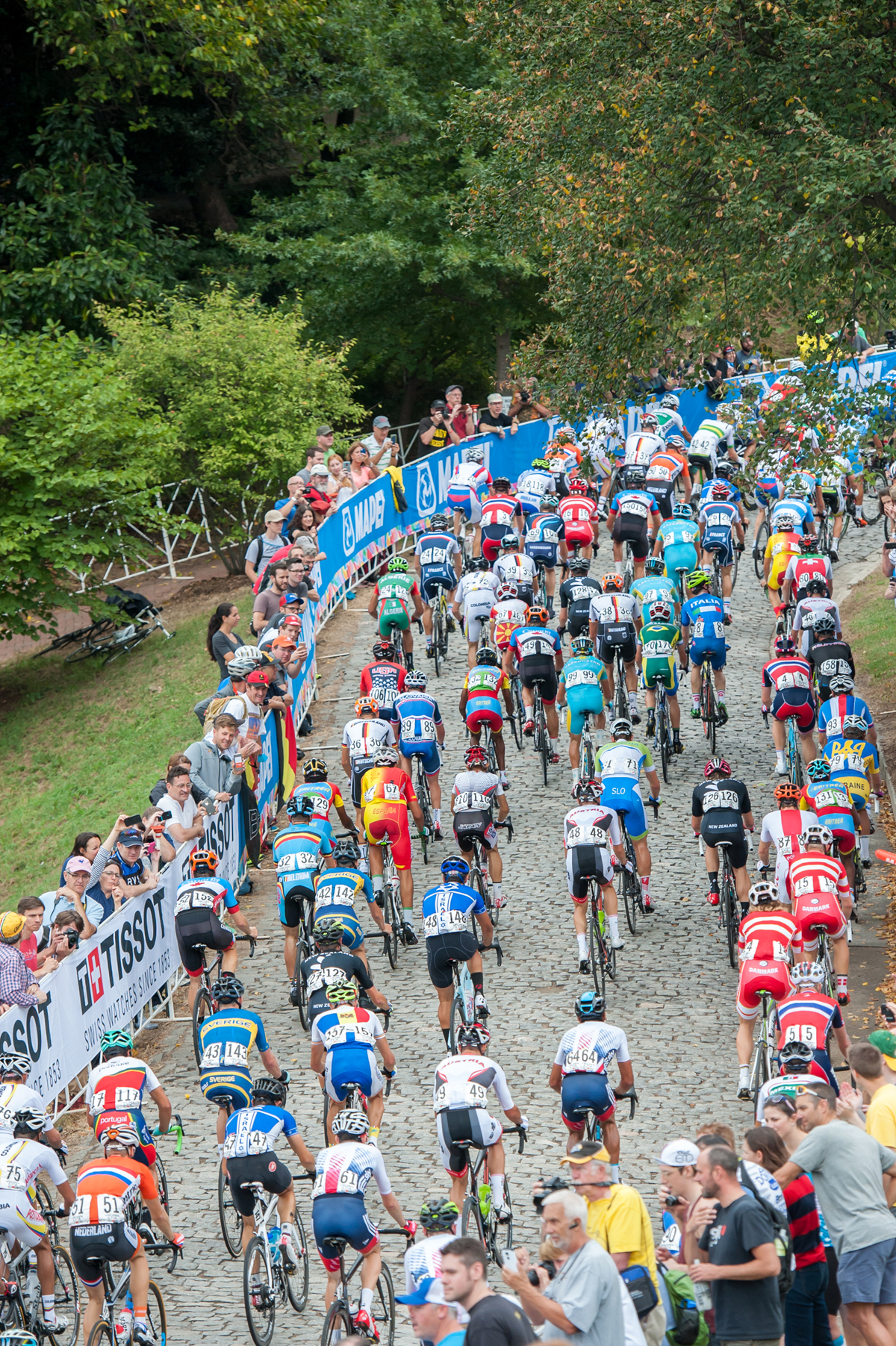
As I watched the riders out practicing on the course, I noticed the next big contrast – no pro team jerseys. The opening event, a team time trial, featured the pro teams we’re used to seeing, but the following individual time trials and road races were contested by the riders representing their home countries. As the teams rode by, I had a hard time identifying individual riders because they were wearing jerseys I’d never seen before.
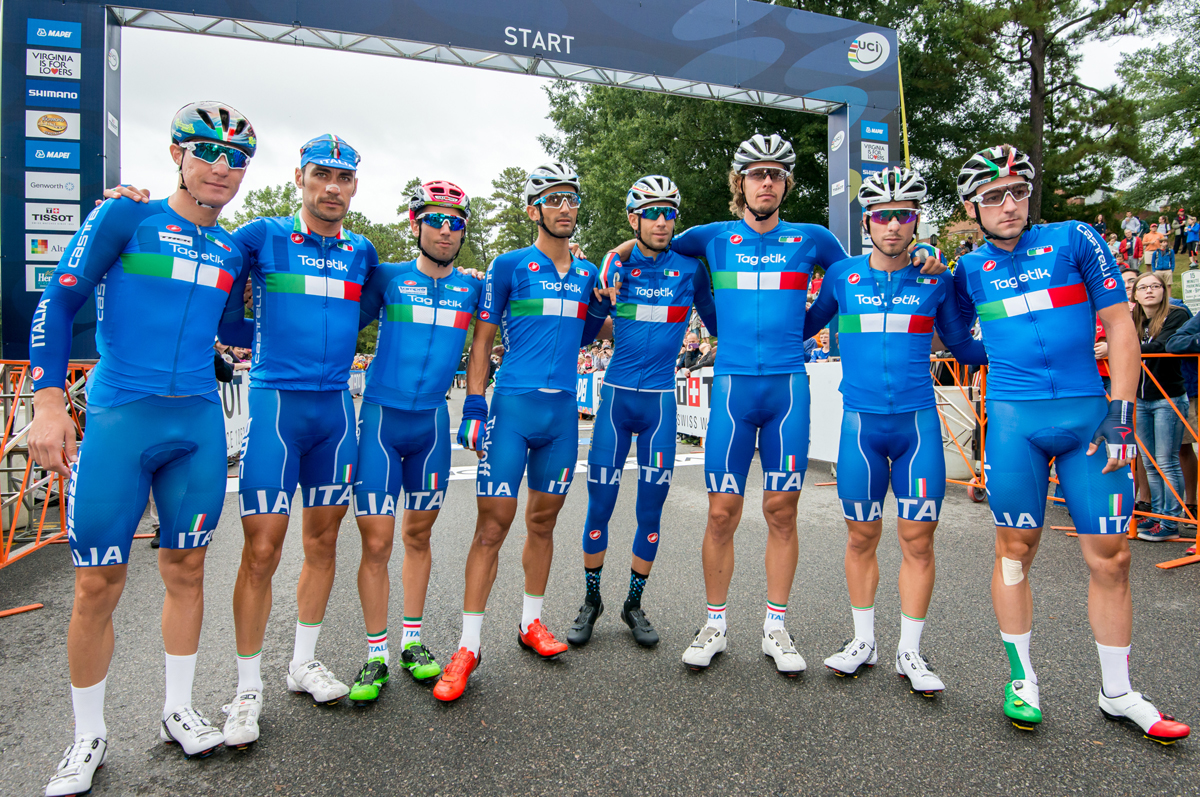
For example, the Italian team had riders that spend the entire season competing against each other for teams such as Cannondale, Astana or BMC. For the Worlds, these riders are thrown together for a couple of weeks which makes for some interesting tactical strategies. I guess a good comparison would be the Olympics. In fact, the awards at the Worlds consist of gold, silver and bronze medals.
Each morning before heading out on the course to shoot photos of the race, I would wander around the start area visiting with the riders. That’s where I noticed the biggest contrast of all. The Worlds consists a number of categories of riders. There are the Junior Women, Elite Women (top pros), Junior Men, Under-23 Men and the Elite Men (top pros). That represents a huge range of skills and racing experience.
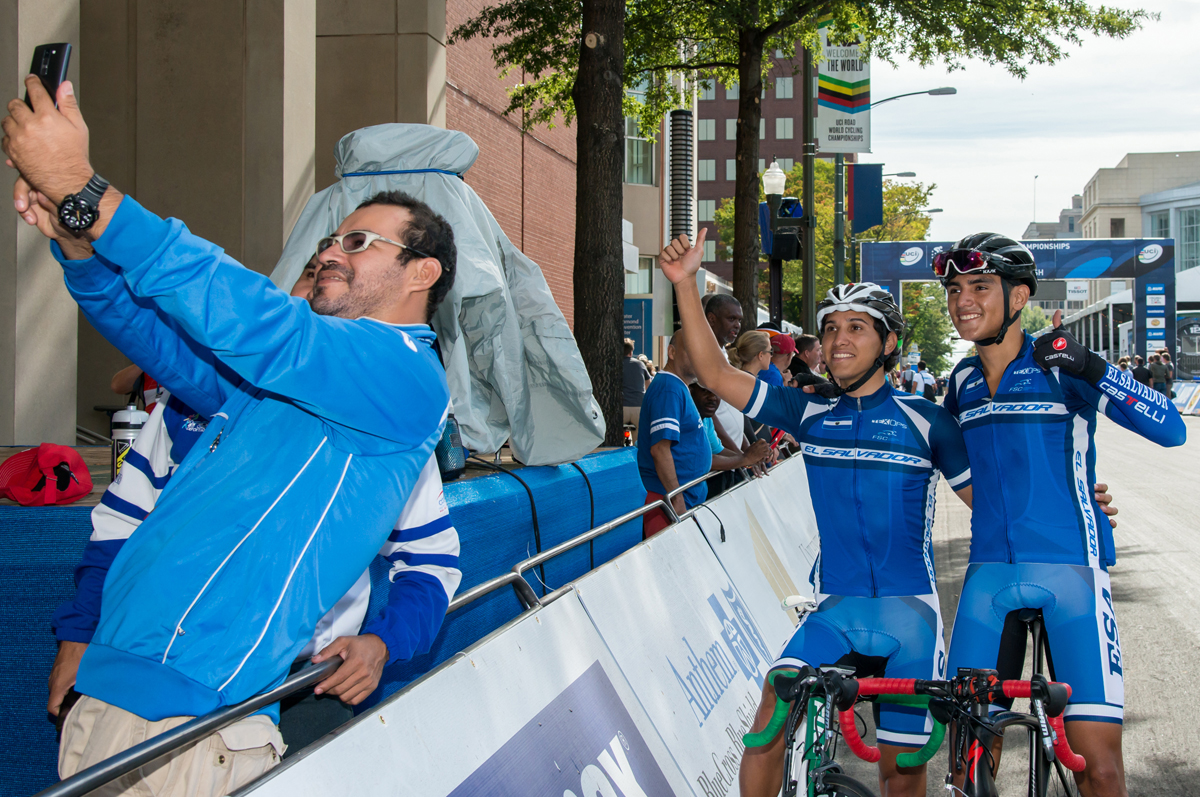
I met the El Salvador men’s team on my flight in to Richmond which consisted of Bryan Mendoza, a junior and Salvador Martinez, an U23 rider. I don’t think these guys had ever competed outside of Central America. Yet a few meters away stood Tom Boonen, Phillipe Gilbert and the rest of the dominant Belgium squad. Even though they were competing in different races of varying distances, they all were racing on the same course with those brutal cobbled climbs. The strain of that was clearly evident about the time the juniors and U23s rounded lap 6 of 8.
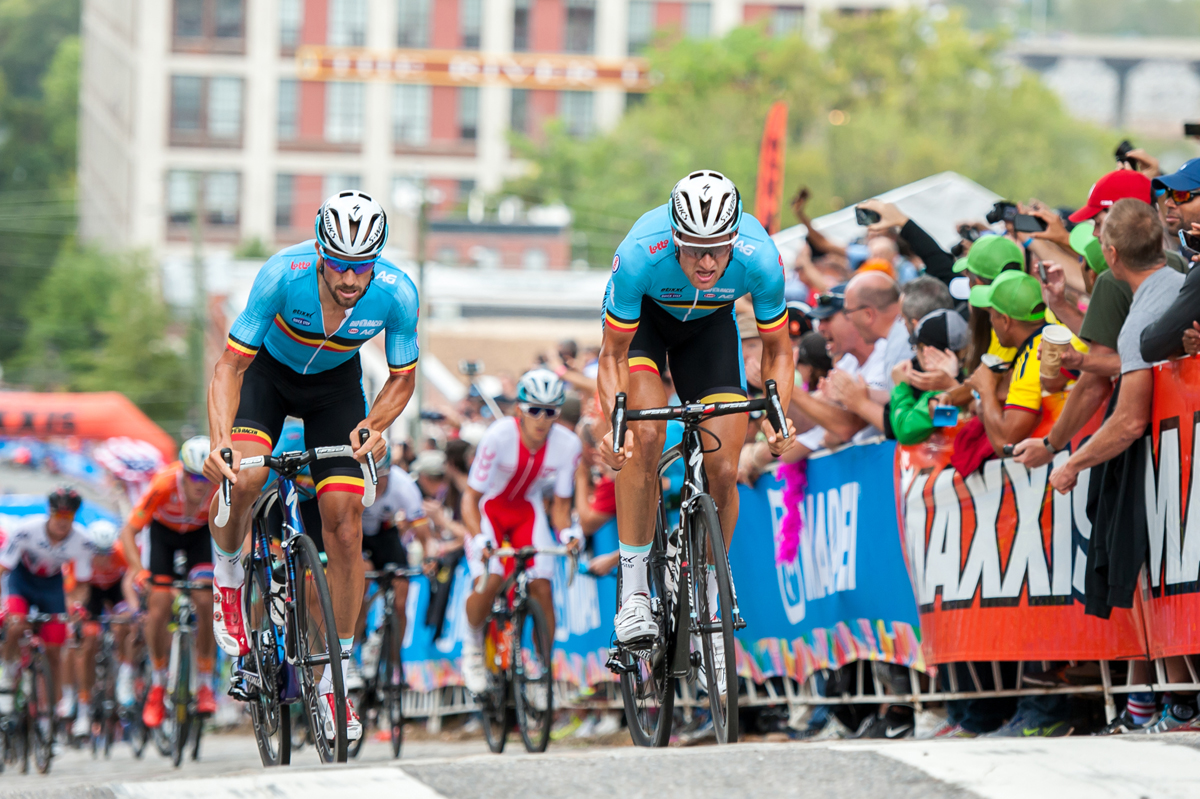
Lastly, I think the courageous effort of Peter Sagan to win the elite men’s road race was the ultimate finale to the Championships. The elite men’s team sizes are based upon the ranking and results of that country’s riders. The dominant Belgians and Italians were allowed to enter the maximum of nine riders each. The USA was allotted six. Slovakia had Peter Sagan, his brother Juraj and Michal Kolar. Sagan knew he didn’t have the team firepower to go head to head against the big teams so he stayed hidden in the peloton for most of the race.
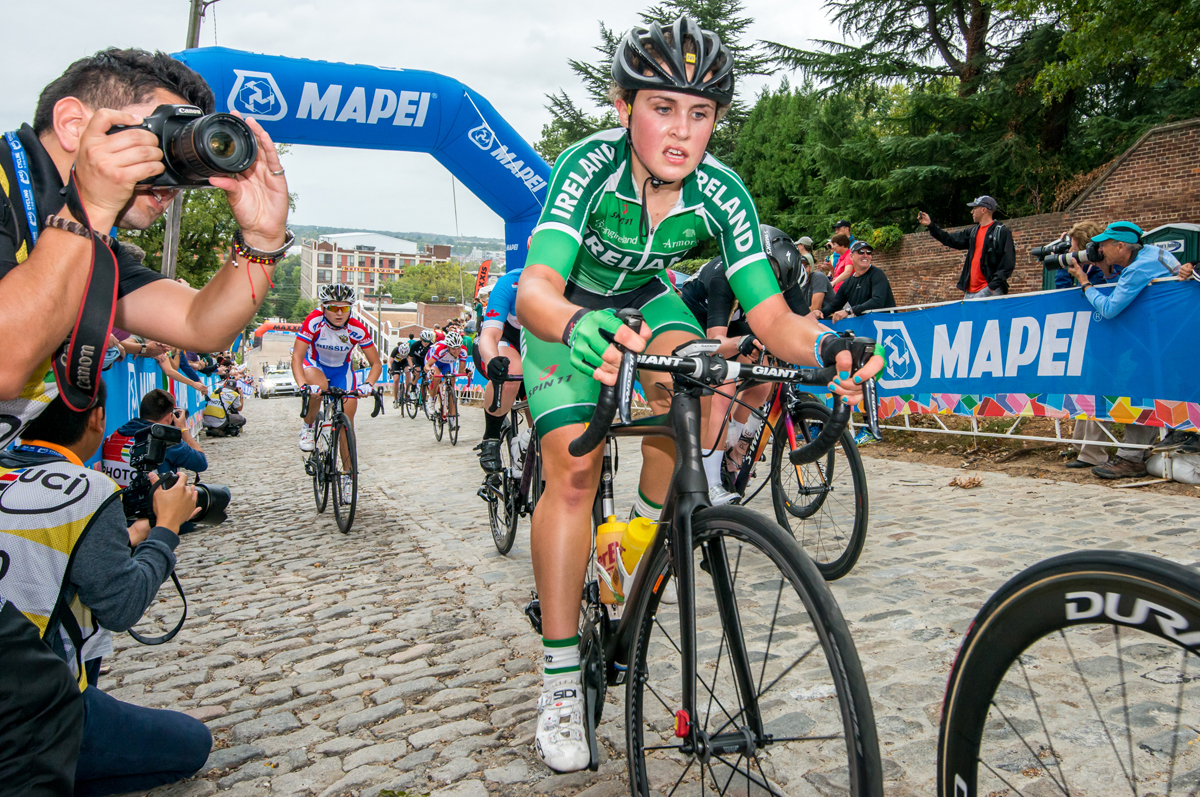
Finally on the last circuit up the fearsome 23rd Street climb, he surged away from the Belgians who were led by Greg Avermaet. At the top of the climb, Sagan had a few bike lengths lead. What lay ahead was a twisty, fast descent followed by a long gradual uphill drag to the finish line. Sagan attacked that descent with vengeance, ripping through the turns and increasing his lead substantially. I’ve never seen a rider build up such a big lead on a short descent like that. Next, Sagan powered up the long drag to the finish while the pack closed in.
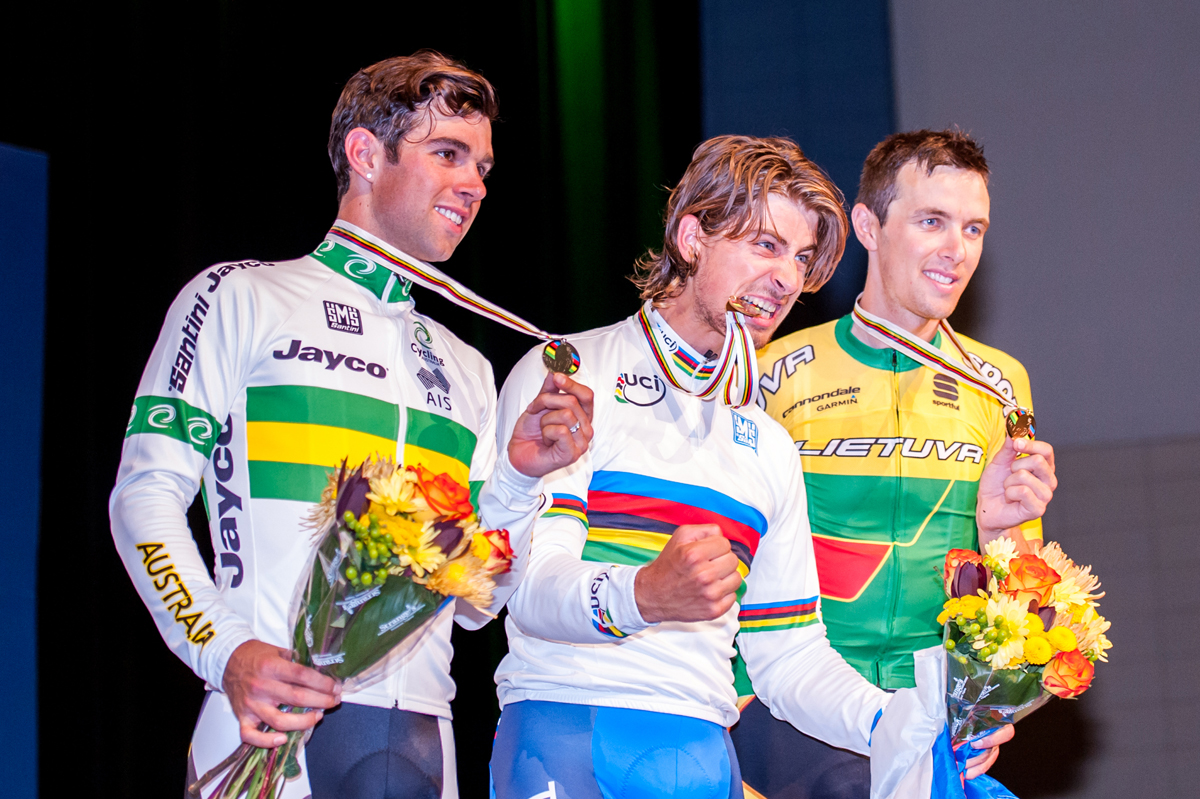
Amazingly, he held them off through sheer grit and won the gold medal. What was even more astounding was how the rest of the riders congratulated Sagan on his win. Almost to a man, the other riders lined up to high five Peter and shake his hand. It was an inspiring display of sportsmanship and a fitting closure to the prestigious World Championships.
Dave Richards is a Utah-based photographer. You can find his work at daverphoto.com and in the pages of Cycling Utah.








